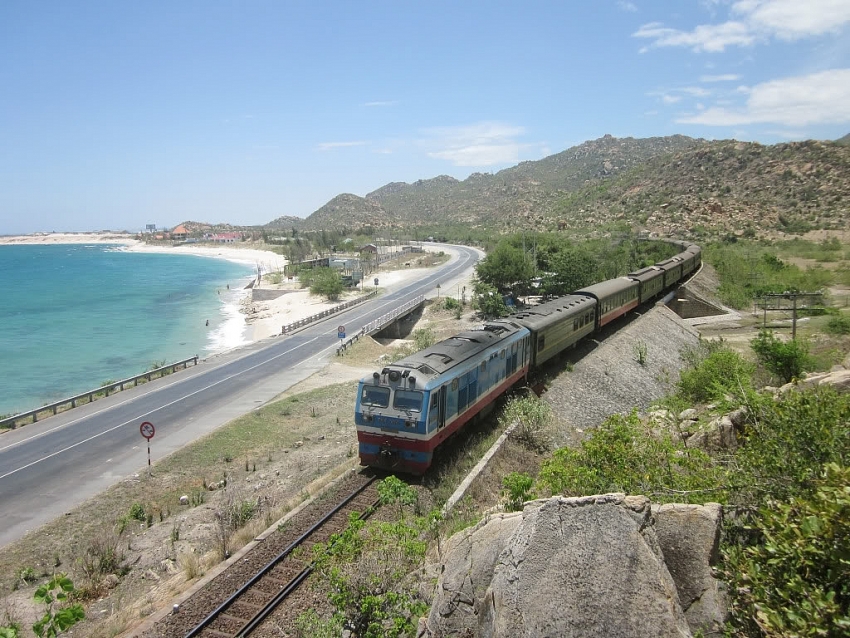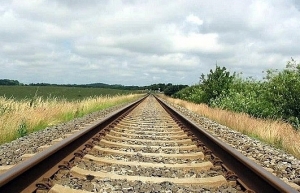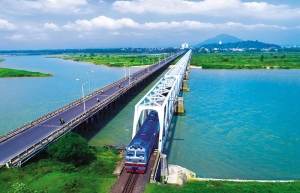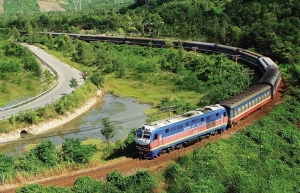Railway development yet to overcome legal hindrances
 |
State-owned railway giant Vietnam Railways (VNR), which is responsible for the management and exploitation of railway infrastructure and operation of the entire national railway network, is still waiting for the Ministry of Transport’s (MoT) submission of a new legal framework to the prime minister, hoping that its proposals will be added to supporting policies to leverage private investment.
Specifically, VNR proposed to the MoT to hand over 297 railway stations, warehouses, inland container depots (ICDs), and all the assets of the Da Lat-Trai Mat railway route to the giant to own, use, and develop, with the assets to be recorded as state capital contribution to the operator as ruled in Article 5(1a) of Decree 46/2018/ND-CP governing the management and use of railway infrastructure assets.
Meanwhile, the remaining assets, including bridges, tunnels, rail system, signal systems, and others, should be handed over to VNR to manage, use, and develop without being recorded as state capital contribution to the operator as ruled in Article 5(1c) of Decree 46.
Approving these points would break with many previous rules in the railway sector (as these assets are now completely state-owned with VNR merely acting as the manager), thus enabling VNR to take the initiative drawing up investment plans and calling on more favourable private investment.
However, according to a VIR source, these proposals are not included in the latest draft scheme on the implementation of Decree 46.
“In the scheme, the assets directly related to train operation remain owned by the state. The assets are handed over to VNR without recording them as state capital contribution. VNR is still the manager and operator without the right to make additional investment from its own funds. Instead, the state is responsible for the investment,” the source said.
Under the Law on Railway Transport 2017 and Decree 46, the assets directly related to train operation include railways, bridges, tunnels, rails, depots, stations, warehouses, as well as ICDs used for railway activities and facilities at railway stations.
Currently, VNR has to build plans for any upgrade of state assets and submit them to authorised agencies for approval in accordance with the law on public investment.
This means that there may be no opportunity for VNR to mobilise funds on its own for new investments, or upgrade railway stations, ICDs, and other facilities to increase operational efficiency or provide better quality services to customers. This also hinders VNR in going ahead with its co-operation plans with its partners. Thus far, many of its projects and many investors have been suffering from these legal barriers.
Specifically, in 2017, VNR signed a co-operation agreement with Saigon Newport Corporation (SNP) to develop ICDs and warehouses at Song Than, Dieu Tri, Yen Vien, Dong Anh, and Dong Dang stations, with the plan to develop more in the future to meet demand. However, up to now, the projects have not been carried out.
Similarly, Lotte E&C’s proposal to invest in the second phase of the upgrading of the Yen Vien-Lao Cai railway route has been on paper for years, while Japanese auto manufacturer Toyota is seeking to build a railway route connecting its factory in the northern province of Vinh Phuc to the main north-south network, using Danang railway station as a transhipment hub to other provinces in the central region, and for transnational transport.
Elsewhere, Southern Airports Services JSC eyes co-operation with VNR in upgrading the Saigon Railway Station building and many others are also getting stuck because of Decree 46.
Ho Huu Hoa, member of the board, said that his corporation has many times submitted proposals but no agreement has been reached. “Our proposal is in line with the actual state of the railway and the models of railway asset management in countries which have developed railways such as Germany, France, Russia, Japan, and Malaysia.”
“The model is to encourage private investment in the railway industry to circumnavigate state budget constraints while increasing transparency and building out a healthier business environment, which would enable us to improve service quality and increase volume and revenue by an estimated 15 per cent per year on average,” Hoa explained.
So far, although the revised Law on Railway Transport 2017 has some improvements, including a number of special incentives such as land use fees, they are widely seen as too little, with domestic and foreign private investors still hesitant to make concrete investments into railway infrastructure and related transport.
VNR’s business performance has not improved much despite strong efforts, partly because of legal barriers which have prevented the giant from investing in developing infrastructure and upgrading facilities to better serve customers. The business results of VNR are expected to continue to fall in 2019, urging the MoT and relevant agencies to take the proposals into further consideration and leveraging private investment in the railway industry.
According to the railway development strategy, the industry is estimated to require VND110 trillion ($4.78 billion) by 2030 to revamp the existing network, VND48 trillion ($2.1 billion) of which will be needed by 2020.
 | Laying the tracks for local railways State-owned Vietnam Railways has begun to bet on a new venture with a Chinese giant in a bid to solve an impasse in financial performance. ... |
 | Railway stake sales on track After the protracted undertaking to attract investors, state-owned railway group Vietnam Railways is struggling to pursue its ambitious divestment plans. |
 | Vietnam Railways signals for growth Amid the growing trade across the ASEAN bloc, Vietnam’s railway industry is seeking new partnerships to develop the rail network in order to cash in ... |
What the stars mean:
★ Poor ★ ★ Promising ★★★ Good ★★★★ Very good ★★★★★ Exceptional
Related Contents
Latest News
More News
- PM orders investment model for North–South high-speed rail (December 22, 2025 | 17:43)
- First members of Danang International Finance Centre revealed (December 22, 2025 | 17:39)
- Securing capital and efficiency for Vietnam’s 2026-2030 growth ambitions (December 17, 2025 | 10:00)
- Driving double-digit growth through green and circular transformation in Vietnam (December 17, 2025 | 09:00)
- Vietnam bucking trend in the global M&A landscape (December 16, 2025 | 14:20)
- Vietnam’s green transition demands collective financial action (December 15, 2025 | 12:00)
- VIR workshop highlights capital and policy for sustainable development (December 15, 2025 | 11:00)
- National Assembly approves pilot mechanisms to accelerate major projects in Hanoi (December 12, 2025 | 11:29)
- Vietnam eases policy approval requirements, simplifies foreign and outbound investments (December 11, 2025 | 17:53)
- Unpacking new momentum in Vietnam’s M&A market (December 10, 2025 | 09:59)

 Tag:
Tag:
























 Mobile Version
Mobile Version